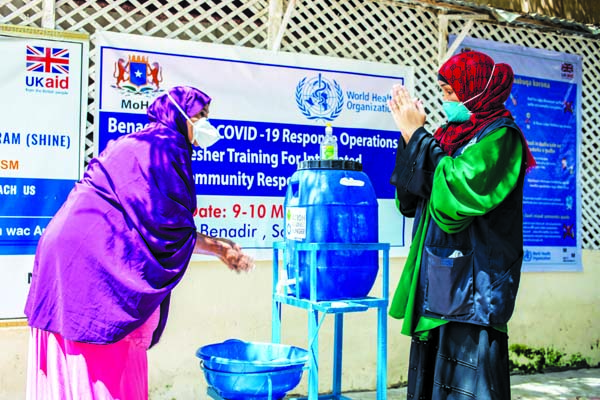
Abby Olena :
It’s not yet clear why some people infected with SARS-CoV-2, the virus that causes COVID-19, get really sick, while others have only mild symptoms. There’s some evidence that chronic health conditions-such as hypertension and diabetes can play a role, and scientists know that people’s genes can influence how their bodies react to other viruses. In a preprint posted to medRxiv on June 2, researchers describe a genome-wide association study (GWAS) of samples from 1,610 hospitalized patients with COVID-19 and 2,205 healthy controls. The authors identified variants in two regions-the locus that encodes blood type and a multi-gene cluster on chromosome 3-that were linked to respiratory failure during SARS-CoV-2 infection.
“We know that people vary in their susceptibility to infectious diseases, and variation in the human genome plays a . . . role in that susceptibility,” Charlotte Houldcroft, who studies interactions between viruses and hosts at the University of Cambridge and was not involved in the work, writes in an email to The Scientist. “A genome-wide association study is a very good way to look at lots of variants across the human genome all at once, without a preconceived idea about which genes might be involved.”
Finding anything meaningful in a GWAS depends upon having enough genomes to analyze. In a pandemic, that’s especially tricky. According to Andre Franke, a geneticist at Christian-Albrechts-University of Kiel in Germany, it was the connections that his colleague Tom Hemming Karlsen, a physician-scientist at the University of Oslo in Norway, has to clinicians and researchers in COVID-19 hot spots in Spain and Italy that made the study possible.
The research team collected, genotyped, and analyzed samples from 775 patients and 950 controls from Spain and 835 patients and 1,255 controls from Italy. The patients were all hospitalized and were either in need of mechanical ventilation or on supplemental oxygen, both of which the researchers categorized as respiratory failure. They pulled out two genomic regions in which certain variants showed up more in patients hospitalized for COVID-19 than in unhospitalized people from the same geographic region.
Ideally, a GWAS analysis would analyze the genomes of people with COVID-19 and compare those who didn’t get very sick to those who experienced severe symptoms, instead of using population-based controls whose exposure to the virus is unknown, says Priya Duggal, a genetic epidemiologist at the Johns Hopkins Bloomberg School of Public Health who did not participate in the study. Nevertheless, “it’s really incredible to see how much work was done in such a short period of time. In about two months, these investigators moved from cases being identified in the hospitals to being genotyped to the identification of two putative regions.”
One region the authors identified is the locus that encodes blood type. They found that people with blood type A were at a higher risk for respiratory failure, while blood group O seemed to be protective. The odds for those with blood type A to be hospitalized with severe respiratory symptoms were nearly 1.5 times the odds for people with other blood types. And those with type O had about two-thirds the odds of being hospitalized as those with other blood types. This analysis echoes preprint findings from patient datasets collected in China and New York, which Franke says makes the research team more confident that it’s a real association.
The other genomic region the researchers identified shows up on the human chromosome 3 and contains several genes of interest. One is SLC6A20, which encodes an amino acid transporter that interacts with ACE2, the main receptor that SARS-CoV-2 uses to get into human cells. Two other genes in this cluster encode immune system-related chemokine receptors: the C-X-C motif chemokine receptor 6 and the CC-motif chemokine receptor 9. Both proteins play a role in T cell differentiation and recruitment during influenza viral infections. This region also shows up in publicly available results from the COVID-19 Host Genetics Initiative, which gives it weight, the authors write.
“Chemokine receptors are important in many manifestations of multiple diseases, so that’s interesting,” says Benjamin Fairfax, a geneticist at the University of Oxford who did not participate in the study. He adds that the SLC6A20 association is also intriguing because of the interaction with ACE2, but that the findings for both the chromosome 3 and blood group loci need to be replicated to give more insight into the underlying biological mechanisms of the disease.
“From the individual perspective of a patient or those people wandering around with blood group A who may think they’re at higher risk, these effect sizes are going to be very, very small compared to major risk factors such as age and sex,” Fairfax says.
The gene cluster on chromosome 3 has an even higher effect size than that of the ABO locus, says Franke, “but we cannot say at the moment which of the many candidate genes is most important. All of them are very attractive in this region.” The odds of being hospitalized with respiratory failure from COVID-19 were 1.77 times higher for those with the variants on chromosome 3 than for people without this genotype.
“Each variant found here only increases a person’s risk a little bit, and we have no idea how,” Houldcroft says. “It doesn’t allow us to predict who will be a severe case, and it doesn’t open up any treatment options. However, it does give us a plausible place to start looking.”
The work is “a really good first step,” says Duggal. “I hope that what follows is some additional studies from other groups and researchers that are able to evaluate what else may be driving this or what these genetic associations might actually mean.”

